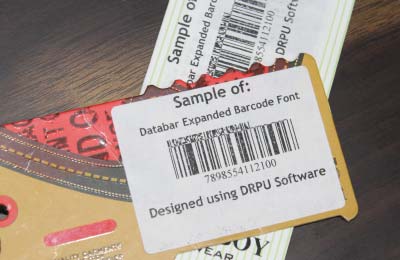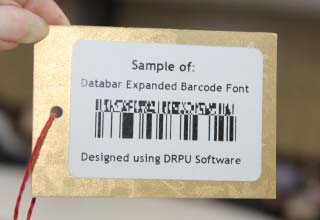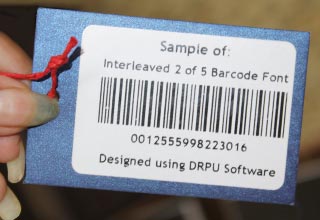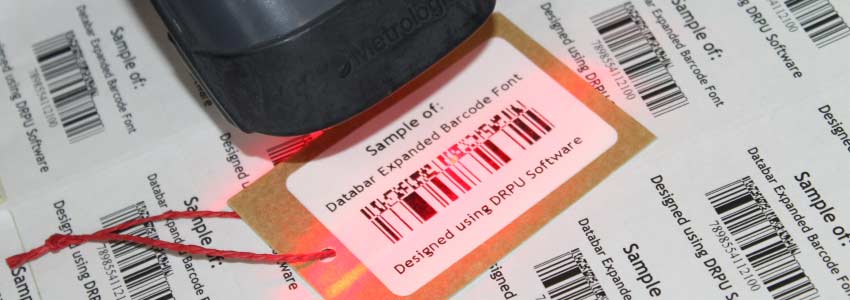Published Date: 23/05/2023
The Data bar Expanded barcode can encode up to 174 characters, including letters, numbers, and symbols. This is significantly more than other linear barcodes, such as Code 128, which are limited to around 40 characters. The barcode can be printed on a variety of surfaces, including paper, cardboard, and plastic.

-
The Data bar Expanded barcode has a unique structure that includes a series of stacked rows of smaller bars and spaces, known as stacked linear symbology. This allows the barcode to be scanned from different angles and distances, making it ideal for use in the retail, healthcare, and transportation industries.
-
One of the primary benefits of the Data bar Expanded barcode is its ability to encode additional information, such as product attributes, expiration dates, and serial numbers, that can be used to improve inventory management and supply chain efficiency. This information can be read by scanners and other data capture devices, such as mobile computers and smart phones, and integrated into inventory management systems, reducing errors and streamlining the ordering process.
-
Another advantage of the Data bar Expanded barcode is its ability to encode variable weight and measure data, which is useful in industries where products are sold by weight or volume, such as the food and beverage industry. This allows for more accurate pricing and inventory management, reducing waste and improving customer satisfaction.
-
The Data bar Expanded barcode is also able to encode coupon and loyalty program information, allowing retailers to offer targeted promotions and discounts to customers. This can increase customer loyalty and drive sales, while also reducing the cost of physical coupon printing and distribution, so that it will be easy for customers to use barcodes.
-
The use of the Data bar Expanded barcode is mandated by many retail and healthcare organizations, including Walmart and the US Food and Drug Administration (FDA), as it provides a more efficient and accurate means of tracking products and reducing errors in the supply chain. Its widespread adoption has also led to increased interoperability between different systems, allowing for seamless data exchange and improved visibility across the supply chain.
-
In terms of implementation, the Data bar Expanded barcode can be generated using a variety of software and hardware solutions, including barcode printers and software, mobile apps, and web-based services. These solutions allow for the customization of the barcode based on the specific needs of the business, such as the encoding of product attributes, expiration dates, and weight and measure data, Which gives the product information to the customers.
Overall, the Data bar Expanded barcode provides a powerful tool for improving efficiency and accuracy in the supply chain, while also enabling targeted marketing and improved customer satisfaction. Its ability to encode a large amount of data in a small space, combined with its wide adoption and interoperability, make it a valuable asset for businesses across a variety of industries.
Information Encoded in a Databar Expanded Barcode
Data bar Expanded is a 2D barcode symbology that can encode a wide range of data types, including alphanumeric characters, binary data, and even entire sentences. It is capable of storing up to 3000 characters in a single barcode, making it useful for applications where a large amount of information needs to be encoded.
-
One of the unique features of Data bar Expanded is its ability to encode multiple data types within a single barcode. For example, it can encode both text and numeric data, as well as dates, serial numbers, and other specialized data types. This flexibility makes it a popular choice for a wide range of applications, like inventory management, product tracking, and document management.
-
Data bar Expanded barcodes can also be used to encode variable length data. This means that the barcode can be adjusted to accommodate different lengths of data, without changing the physical size of the barcode itself. This makes it particularly useful for applications where data is constantly changing or where the length of data may vary depending on the specific product or item being tracked.
-
In addition to text and numeric data, Data bar Expanded can also encode other types of data, including binary data such as images, audio files, and video clips. This is possible because Data bar Expanded uses a binary encoding scheme, which can represent any type of data in a series of ones and zeros. The binary encoding scheme also makes Data bar Expanded highly resistant to errors and damage, as the barcode can be easily reconstructed even if a portion of it is missing or damaged.
-
Finally, Data bar Expanded supports advanced features such as error correction, which allows the barcode to be read even if a portion of it is damaged or unreadable. It also supports security features such as encryption, which can be used to protect sensitive data and prevent unauthorized access.
Overall, the ability of Data bar Expanded to encode a wide range of data types, its flexibility in accommodating variable length data, and its support for advanced features such as error correction and encryption, make it a highly versatile and useful barcode symbology for a wide range of applications.
Install or Download Barcode Software
Download Now

